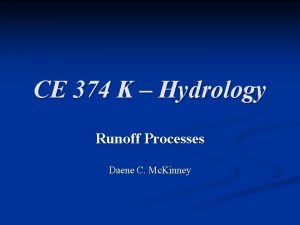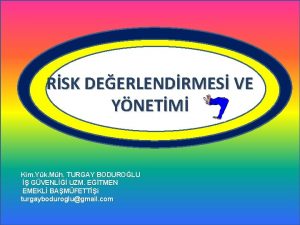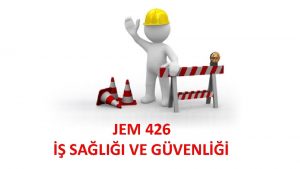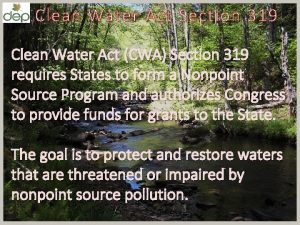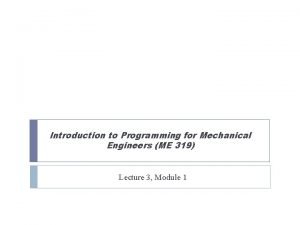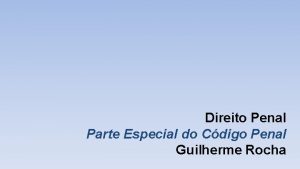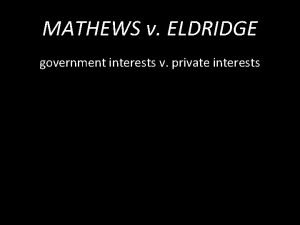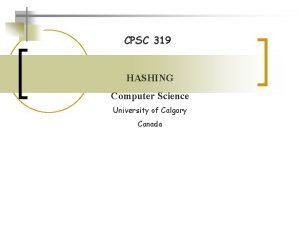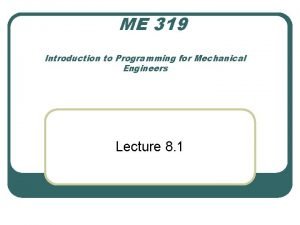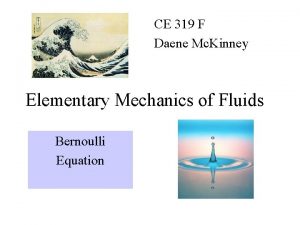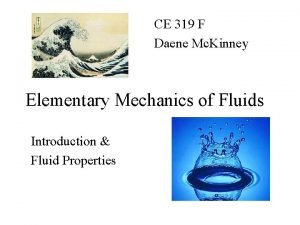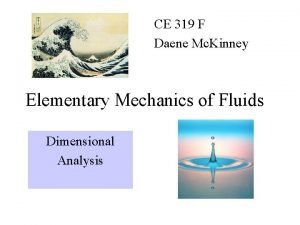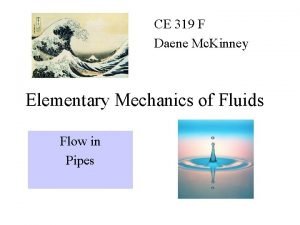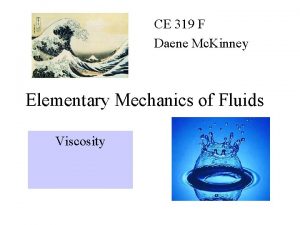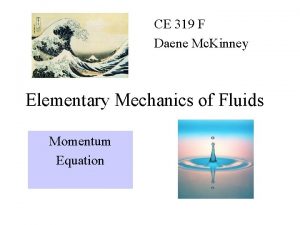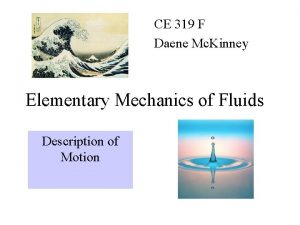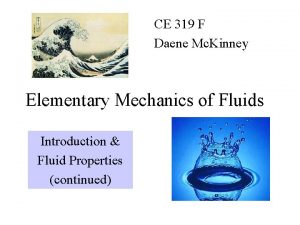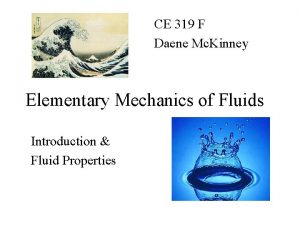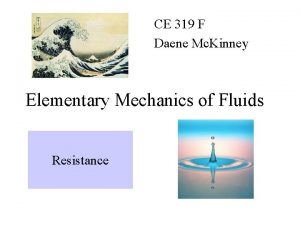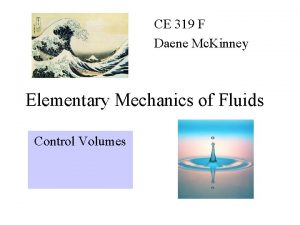CE 319 F Daene Mc Kinney Elementary Mechanics














- Slides: 14

CE 319 F Daene Mc. Kinney Elementary Mechanics of Fluids Introduction & Fluid Properties (continued)

Table A. 2 PHYSICAL PROPERTIES OF GASES AT STANDARD ATMOSPHERIC PRESSURE AND 15ºC (59ºF)

Example (2. 4) • Given: Natural gas – Time 1: T 1=10 o. C, p 1=100 k. Pa – Time 2: T 2=10 o. C, p 2=200 k. Pa • Find: Ratio of mass at time 2 to that at time 1 – Ideal gas law (p is absolute pressure)

Example (2. 8) • • Estimate the mass of 1 mi 3 of air in slugs and kgs Assume rair = 0. 00237 slugs/ft 3, the value at sea level for standard conditions

Elasticity (Compressibility) • Deformation per unit of pressure change • For water Ev = 2. 2 GPa, 1 MPa pressure change = 0. 05% volume change Water is relatively incompressible

Example (2. 45) • Given: Pressure of 2 MPa is applied to a mass of water that initially filled 1000 -cm 3 volume. • Find: Volume after the pressure is applied. • Solution: E = 2. 2 x 109 Pa (Table A. 5)

Vapor Pressure • Pressure at which a liquid will boil for given temp. • Vapor pressure increases with temperature – Increasing temperature of water at sea level to 212 o. F, increases the vapor pressure to 14. 7 psia and boiling occurs – Boiling can occur below 212 o. F if we lower the pressure in the water to the vapor pressure of that temperature • At 50 o. F, the vapor pressure is 0. 178 psia • If you reduce the pressure in water at this temperature, boiling will occur (cavitation)

Surface Tension • Below surface, forces act equally in all directions • At surface, some forces are missing, pulls molecules down and together, like membrane exerting tension on the surface • If interface is curved, higher pressure will exist on concave side • Pressure increase is balanced by surface tension, s • s = 0. 073 N/m (@ 20 o. C) Interface water air Net force inward No net force

Capillary Rise • • • Given: Water @ 20 o. C, d = 1. 6 mm Find: Height of water Solution: Sum forces in vertical Assume q small, cosq 1 W

Example (2. 51) • • • Find: Capillary rise between two vertical glass plates 1 mm apart. s = 7. 3 x 10 -2 N/m l is into the page Solution: s q s h t

Examples of Surface Tension

Example (2. 47) • Find: The formula for the gage pressure within a sperical droplet of water? • Solution: Surface tension force is reisited by the force due to pressure on the cut section of the drop

Example (2. 48) • Given: Sperical bubble, inside radius r, film thickness t, and surface tension s. • Find: Formula for pressure in the bubble relative to that outside. • Solution:

Bug Problem Cross-section of bug leg F F=surface tension on 1 side of leg q
